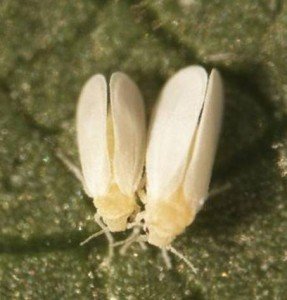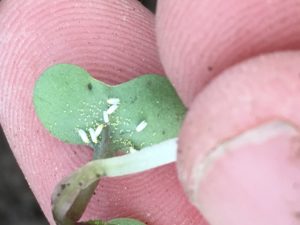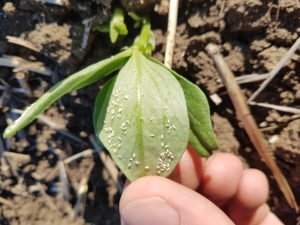This summer silverleaf whitefly (SLW) populations have been extremely high in many cotton crops, particularly in NSW. As these crops are defoliated, large numbers of SLW are moving out of the cotton into surrounding vegetation, including emerging grain crops.
Whilst the number of SLW adults landing in seedling canola, wheat, faba beans and cereals can look dramatic, previous experience has shown the impact of these infestations on the growth of the grain crops is negligible. In 2014 we saw a similar scenario, and you can read the related article here.
SLW adults cause very little direct damage to crops as a result of their feeding. Their pest status in cotton is associated with the production of large quantities of honeydew that contaminates the open cotton. In horticulture, their pest status is associated with their potential to transmit viruses that affect crop growth and productivity. Neither of these impacts are issues for grain crops.
The impact of nymphs on plants is potentially significant, but the likelihood of nymphs surviving long in grain crops is considered low. This season we have seen SLW laying eggs in canola, faba beans and wheat. As temperatures cool, SLW activity will drop off. SLW are a warm-season pest and do not persist over winter in crops where temperatures drop below 20°C. Adults live for up to 2 weeks and we expect that they will die or move from these largely unsuitable hosts in this timeframe.
Seeing SLW in wheat, for example, shows very clearly that they are not deliberately seeking out these crops, but landing in them as they disperse from cotton or broadleaf weeds. Grasses are known to be poor hosts for SLW.
In addition to many of the grain crops being unsuitable for SLW, we know that SLW nymphs are very susceptible to neonicitinoid seed treatments, so it is even more unlikely that any nymphs that result from eggs laid in grain crops will persist in treated crops.



